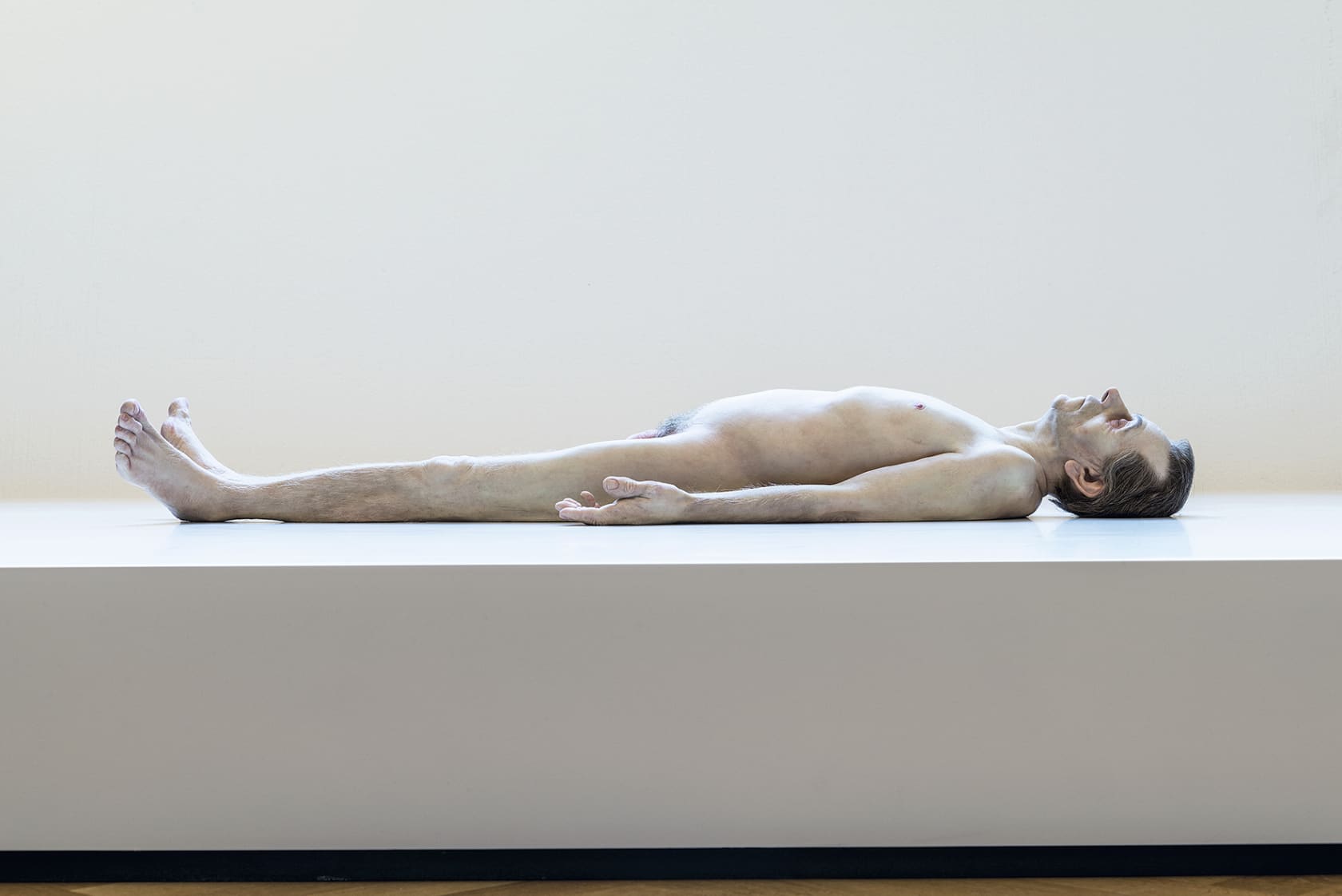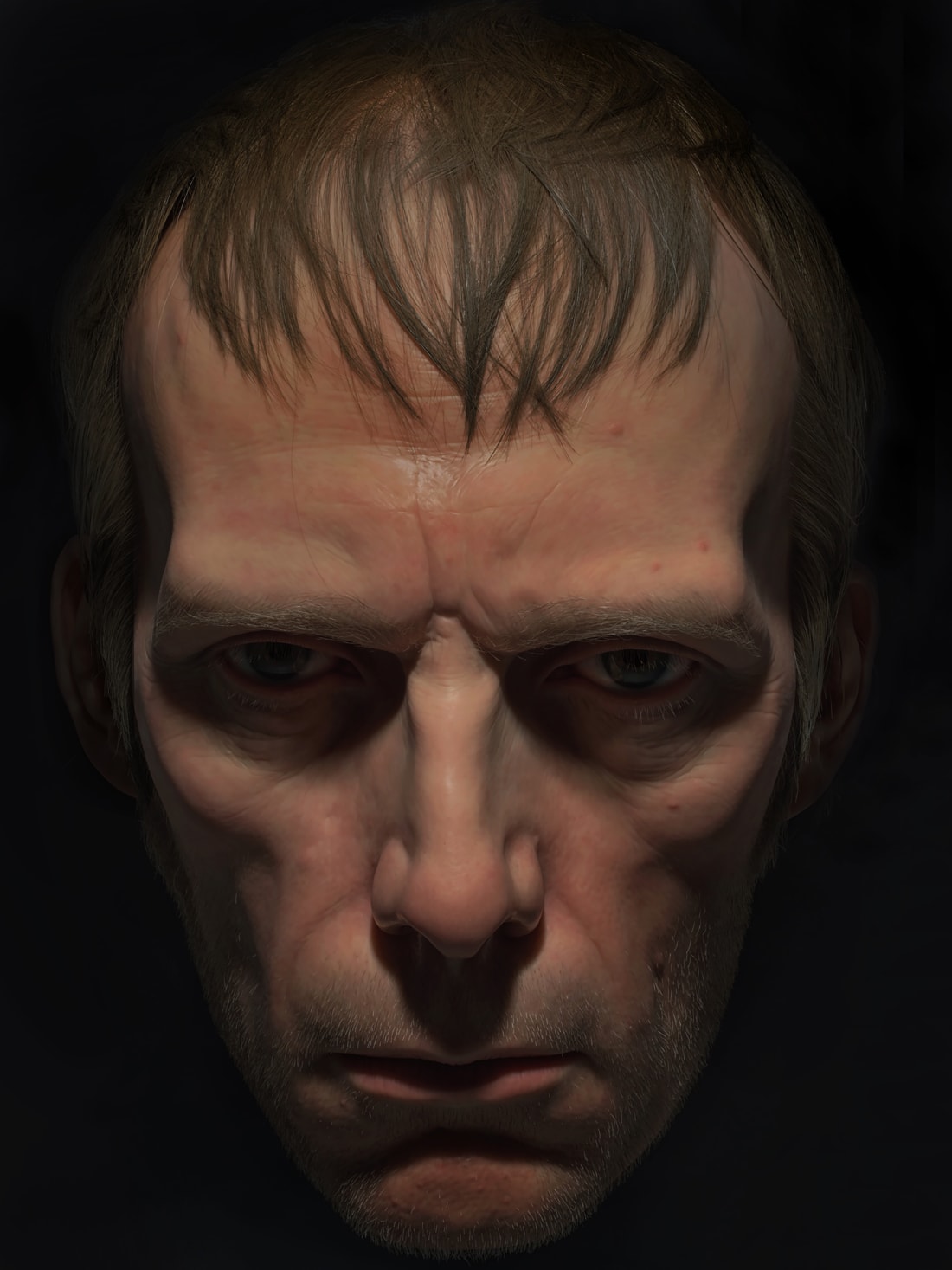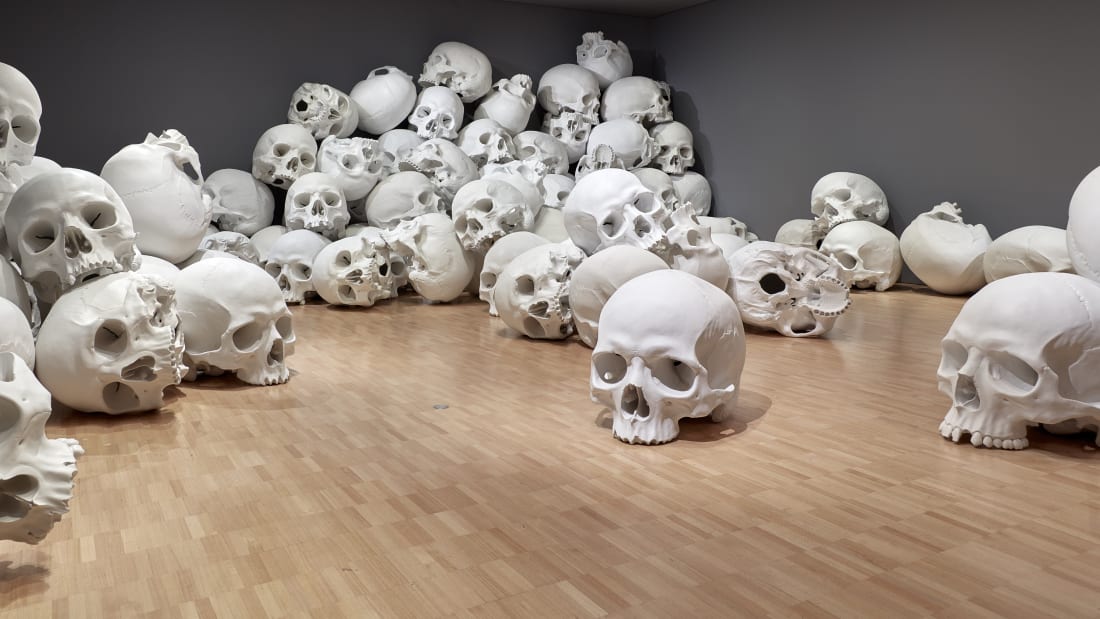
Ron Mueck Dead Dad, 1996–97
Dead Dad is one of Mueck’s earliest and most significant works, first shown in the legendary exhibition Sensation: Young British Artists from the Saatchi Collection at London’s Royal Academy of Arts in 1997. ‘Of the 110 exhibits by some of Britain’s best-known contemporary artists, it was this work [...] that drew excited attention and enthusiastic responses from the public,’ recalls David Hurlston. ‘What made the piece so compelling was that it was at once astounding in its apparent realism and truly poignant in its humility and vulnerability’ (Hurlston, 2011, p. 19). Having begun his career in film and television, Mueck had only recently dedicated himself to fine art. This sculpture was lauded as the star of the show, which was instrumental in establishing him as one of the most important artists of his generation.
The pathos of Dead Dad is heightened by its uncannily lifelike and yet lifeless quality. While the subject recalls art-historical references such as the crucifixion, there is nothing heroic about Mueck’s depiction of death. Instead, his father figure is undeniably human, even pitiable, with its ‘obsessive truth to anatomical detail, from wizened face to limp genitals to splayed feet, and its replication of the stiffened posture of rigor mortis’ (Rosenblum, 2005, p. 46). This painstaking fidelity to detail creates a sense of intimacy through close examination, lending the work the powerful aura of a reliquary or votive object commemorating the dead.
Scale is one of the key psychological tools that Mueck uses in his work. Despite their extraordinarily lifelike appearance, his figures are always smaller or larger than life-size and removed to their own realm by these deviations from reality. The artist has often been quoted as saying that Dead Dad’s size is such that one could pick him up and cradle him, while the reduction in scale also intensifies the sense of loss. The emphasis is upon dying as an irreversible process of diminution, with the lifeless parent no longer looming large in relation to the child, who now becomes head of the family with all of the responsibilities that entails.





























































































































































































